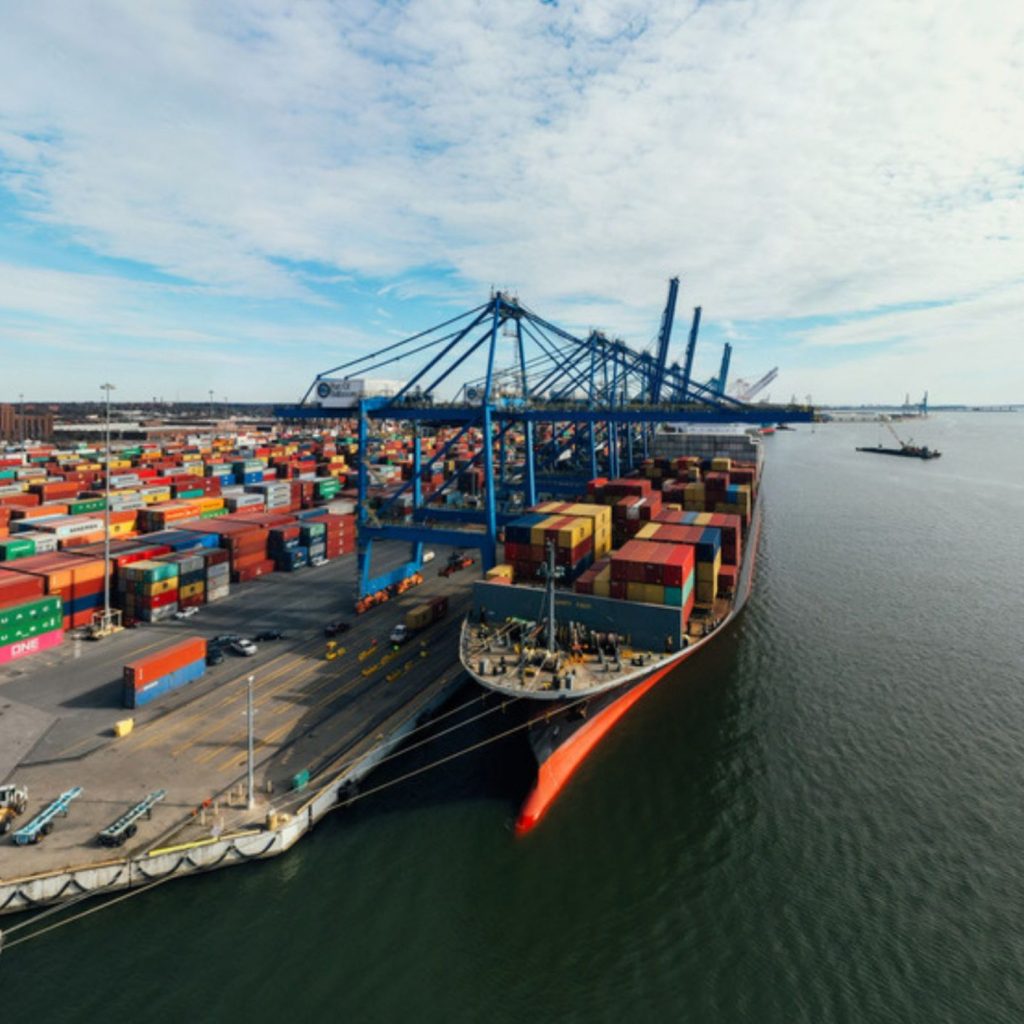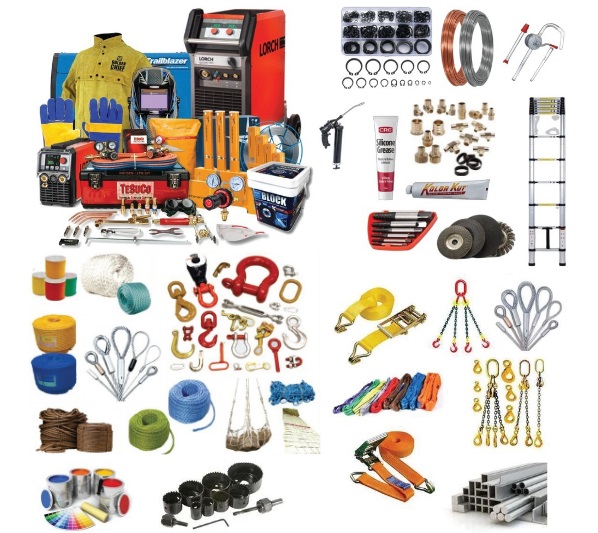
Ropes & Hawsers-Ropes and hawsers are essential components in the operation of ships, playing crucial roles in various maritime activities. Ropes, traditionally made of natural fibers but now often composed of synthetic materials, are used for a wide range of tasks, such as securing sails, mooring, towing, and anchoring. Their versatility and strength make them indispensable in managing a ship’s movements and ensuring it stays securely in place while docked or anchored. Hawsers, which are much thicker and stronger than ordinary ropes, are specifically designed for heavy-duty tasks, such as towing large vessels or securing a ship during mooring. They are used to bear the immense forces exerted by tides, currents, and winds on a ship at sea or in port. Made from high-tensile materials like steel or synthetic fibers, hawsers provide the durability and strength required for these demanding conditions. Both ropes and hawsers are vital for maintaining control over a ship’s stability and positioning, ensuring safe docking, towing, and cargo operations. The proper use and maintenance of these components are critical to the safety and efficiency of maritime operations.
Rigging Equipments & General Deck Items-Rigging equipment and general deck items are essential for the daily operations and safety of ships. Rigging equipment, which includes ropes, cables, chains, pulleys, and winches, is primarily used for lifting, moving, and securing heavy loads on board. It plays a crucial role in handling cargo, adjusting sails (in sail-powered vessels), and positioning equipment or parts during repairs and maintenance. Rigging ensures that loads are properly balanced and secured, reducing the risk of accidents and damage during handling. Modern rigging often utilizes synthetic ropes and high-strength metal chains for durability and efficiency in various marine conditions. General deck items, such as fenders, bollards, cleats, and fairleads, contribute to the overall safety and functionality of a ship’s deck. Fenders protect the ship’s hull from damage during docking, while bollards and cleats provide secure points for mooring ropes. Fairleads help guide ropes and lines smoothly, preventing tangling or excessive wear. Additionally, ladders, gangways, and other access equipment ensure safe movement of crew and cargo between the ship and dock. Together, rigging equipment and deck items are fundamental to the smooth operation of a ship, enabling safe navigation, mooring, and cargo management in a highly demanding marine environment.
Paints & Equipment– Paints and equipment are critical for the protection, maintenance, and aesthetics of ships. Marine paints, specifically formulated to withstand harsh sea conditions, play a vital role in preserving a ship’s structure by providing protection against corrosion, fouling, and wear. The salty, moist maritime environment is highly corrosive, especially to metal surfaces, making protective coatings essential for prolonging the life of a vessel. Anti-corrosive paints protect the ship’s hull, deck, and other exposed parts from rust, while anti-fouling paints prevent marine organisms like barnacles and algae from adhering to the underwater hull, which can reduce a ship’s speed and fuel efficiency. Paint equipment, such as brushes, rollers, spray guns, and scaffolding, allows for the proper application of these specialized coatings. In addition to protecting against environmental damage, marine paints enhance the appearance of the ship and provide visibility markers, such as color coding and safety lines. The right equipment ensures an even, thorough application of paints, contributing to a ship’s overall durability and efficiency. Proper maintenance of a ship’s paintwork not only preserves its structural integrity but also improves performance, safety, and compliance with maritime regulations regarding hull cleanliness and corrosion management.
Hose & Coupling – Hoses and couplings are essential components in ships, serving crucial roles in fluid transfer and firefighting systems. Hoses on ships are used for a variety of tasks, including pumping water, fuel, oil, and other liquids between different sections of the vessel or between the ship and shore facilities. They are critical for maintaining the ship’s engine cooling systems, bilge water removal, and fueling operations. Marine hoses are typically made from durable materials like rubber or synthetic compounds to withstand high pressure, harsh weather, and exposure to chemicals, ensuring reliable fluid transfer in demanding maritime environments. Couplings, which connect hoses to pumps, valves, and other equipment, are just as important. They allow for quick and secure attachment and detachment of hoses, ensuring efficient fluid flow with minimal leakage. Couplings must be robust and resistant to corrosion due to constant exposure to seawater and fluids. In firefighting, hoses and couplings are essential for delivering water or foam to combat fires, making them a critical part of the ship’s safety systems. Together, hoses and couplings enable efficient, safe, and reliable fluid management on ships, whether it’s for day-to-day operations or emergency situations, ensuring the ship’s overall functionality and safety.
Metal Sheets & Bars – Metal sheets and bars are fundamental materials used in the construction, maintenance, and repair of ships, providing structural integrity and strength. Metal sheets, typically made of steel or aluminium, are extensively used in forming the ship’s hull, deck, superstructures, and bulkheads. Their durability and resistance to corrosion are essential for withstanding harsh marine conditions, including constant exposure to saltwater, waves, and weather. Steel sheets offer excellent strength and rigidity, contributing to the ship’s overall structural stability and protection, while aluminium sheets are often used in areas where lighter weight is preferred, such as in superstructures or smaller vessels. Metal bars, also commonly made from steel or aluminium, serve a range of functions, from reinforcing structures to forming frames, railings, and supports. They are essential for adding extra strength to key areas, such as the ship’s skeleton, ensuring that the vessel can withstand heavy loads, rough seas, and the constant strain from daily operations. Bars are also used in manufacturing smaller components like ladders, handrails, and various fittings on deck. The combination of metal sheets and bars provides the foundational framework for the ship’s strength, stability, and safety, ensuring it can endure the stresses of marine environments and heavy-duty operational demands.
Welding Equipments – Welding equipment is vital in the construction, maintenance, and repair of ships, playing a key role in ensuring the vessel’s structural integrity and longevity. In shipbuilding, welding is used to join metal components like steel plates, beams, and pipes that form the ship’s hull, deck, and superstructure. The strength of these welded joints is crucial, as they must withstand the stresses imposed by waves, weather, and the ship’s operations. Welding is also employed to fabricate smaller components such as railings, ladders, and engine parts, making it indispensable in almost every aspect of a ship’s construction. In maintenance and repair, welding equipment is used to fix cracks, reinforce weakened sections, and replace damaged or corroded parts of the ship. This ensures that ships remain seaworthy and safe for their crew, cargo, and passengers. Various welding techniques, such as arc welding, MIG (Metal Inert Gas) welding, and TIG (Tungsten Inert Gas) welding, are used based on the materials and the specific requirements of the job. With marine environments being highly corrosive, frequent welding repairs are often necessary to maintain the vessel’s structural strength. Overall, welding equipment is essential for building, maintaining, and extending the operational life of ships.
